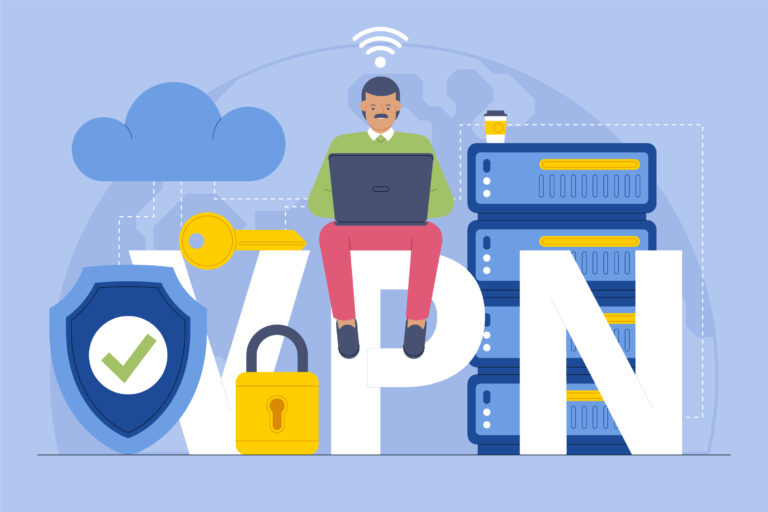Introduction
India’s MSME sector forms the backbone of the country’s economy, contributing over 30% to the GDP and employing more than 11 crore individuals. Yet, despite their importance, Micro, Small, and Medium Enterprises (MSMEs) often lack structured cybersecurity frameworks—making them prime targets for cyberattacks. In 2022 alone, nearly 43% of Indian cyber incidents targeted MSMEs, resulting in data breaches, downtime, and reputational harm.
To help address this growing risk, the Indian Computer Emergency Response Team (CERT-In) released a comprehensive list of 15 elemental cyber defence controls—a baseline framework tailored specifically for MSMEs. These aren’t optional suggestions; they are becoming the new normal in compliance expectations, insurance readiness, and vendor qualification. More importantly, they lay the groundwork for long-term cyber resilience.
This blog unpacks each of these controls with MSME-friendly insights and real-world implications. More than just a compliance checklist, these controls help safeguard business continuity, improve operational maturity, and build digital trust with customers and partners. If you’re an MSME leader navigating resource constraints, regulatory pressure, and growing IT complexity this is your roadmap to transforming cybersecurity from a cost to a strategic advantage.
Understanding CERT-In’s Role for MSMEs
CERT-In is India’s national agency for cybersecurity incident monitoring and response. For MSMEs, it provides advisory support, incident reporting channels, and now, elemental cyber controls.
- CERT-In mandates incident reporting under Section 70B
- Offers guidance for MSMEs with limited IT resources
- Provides free threat advisories and alerts
- Releases sector-specific security guidelines and controls
- Supports collaboration with MSPs for compliance
- Enables reporting of phishing, DDoS, and data breaches
- Positions cybersecurity as a national economic priority
Why MSMEs Are Prime Cyber Targets
MSMEs are often less protected, less monitored, and more likely to pay ransoms or suffer downtime, making them easy prey for cybercriminals.
- Weak perimeter and outdated infrastructure
- Minimal or no security training for staff
- Unpatched systems and legacy applications
- Remote work with unmanaged endpoints
- Dependency on free or outdated antivirus tools
- Low cyber awareness among decision-makers
- Often unaware of data protection laws
The 15 Elemental Cyber Defence Controls: An Overview
CERT-In recommends 15 foundational controls, categorized into policy, technical, and procedural safeguards—designed to help MSMEs build a basic but effective cybersecurity risks posture.
- Create an information security policy and assign ownership
- Deploy endpoint security and antivirus tools
- Implement firewall and network segmentation controls
- Ensure regular system and software patching
- Use strong authentication and password policies
- Maintain secure data backup and recovery plans
- Conduct regular awareness training for staff
Aligning Controls with Business Continuity Goals
Compliance alone doesn’t guarantee security. These controls support continuity by minimizing disruption, protecting customer data, and ensuring post-incident recovery.
- Reduce business downtime in case of cyberattacks
- Improve data integrity with regular backups
- Protect financial data and customer PII
- Enhance operational recovery through better documentation
- Maintain stakeholder trust post-incident
- Avoid fines or contract loss due to breaches
- Boost resilience against ransomware and phishing attacks
Cost-Effective Cybersecurity: A Myth or Reality?
CERT-In’s 15 controls are designed with MSME constraints in mind. Many can be implemented with minimal tools, external support, or bundled MSP services.
- Use free-tier endpoint security with central management
- Leverage cloud backups instead of costly tape storage
- Configure firewalls on existing routers
- Conduct internal password audits with existing tools
- Use email filters via Microsoft 365 or Gmail
- Leverage WhatsApp/webinars for awareness training
- Partner with local MSPs for shared security models
Why Compliance is the Starting Line, Not the Finish
Passing a security audit doesn’t mean you’re safe. Threat actors evolve daily. These controls create a habit of continuous improvement.
- Compliance without culture = short-lived protection
- Static policies fail under dynamic threat models
- Every audit reveals new blind spots
- Compliance gives you credibility, not immunity
- Controls must be tested during real incidents
- External audits help discover policy gaps
- Regular updates prevent policy obsolescence
Incident Reporting: What CERT-In Expects
MSMEs must report incidents within 6 hours of detection as per CERT-In’s 2022 directive. Non-compliance may lead to legal and regulatory penalties.
- Mandatory for all MSMEs regardless of size
- Report via CERT-In’s official portal or email
- Document the nature, impact, and time of incident
- Maintain logs for 180 days for investigation
- Assign an internal contact for coordination
- Include vendor/third-party info if relevant
- Follow reporting formats issued by CERT-In
The Link Between Cyber Hygiene and Vendor Trust
Large enterprises and government projects increasingly assess MSME partners for cybersecurity maturity. CERT-In compliance can help MSMEs win contracts.
- Cyber hygiene is now a pre-qualification factor
- Vendor scorecards include patching and backup reviews
- Secure partners are less likely to lose projects
- RFPs often ask for ISO or CERT-In controls
- Strong controls build digital supply chain trust
- Proves data protection for B2B transactions
- Enhances brand image with larger clients
Why Awareness Training Is a High-Impact, Low-Cost Tool
Most breaches begin with human error—phishing clicks, weak passwords, or misplaced devices. Basic awareness training cuts risks dramatically.
- Teach staff to recognize phishing emails and links
- Train on password strength and device encryption
- Set clear Do’s and Don’ts for remote work
- Use role-based training (Finance, HR, Admin)
- Repeat short sessions quarterly or semi-annually
- Use case studies of recent attacks for relevance
- Measure effectiveness with simulated phishing drills
Backup & Restore: The Unsung Cyber Hero
A simple backup can neutralize ransomware and avoid massive data loss. Yet, many MSMEs rely on local drives or outdated tapes.
- Automate cloud backups (OneDrive, GDrive, AWS, etc.)
- Keep offline backups for ransomware recovery
- Test restore process monthly
- Separate backups from production systems
- Encrypt backup files for data privacy
- Maintain documentation of backup policy
- Assign responsibility to one admin team
Role-Based Access Control (RBAC) for Data Protection
CERT-In emphasizes limiting access to sensitive data based on employee roles. RBAC minimizes insider threats and controls damage from compromised accounts.
- Grant access based on role, not seniority
- Limit admin privileges to essential personnel
- Regularly review user permissions and update as needed
- Revoke access immediately upon employee exit
- Use MFA for high-privilege accounts
- Document access control policies clearly
- Monitor logs for privilege escalation
Importance of Timely Software and OS Updates
Outdated systems are common breach vectors. Patch cycles should be enforced as a core part of MSME IT routines.
- Schedule patching windows every month
- Enable auto-updates on systems where possible
- Use endpoint management tools (Intune, RMM, etc.)
- Track patch success/failure across all endpoints
- Prioritize OS and browser updates
- Don’t delay critical CVE patches
- Maintain a patch log for audits
Network Segmentation: Keeping Damage Contained
Segmenting internal networks isolates critical systems, limiting the spread of malware or ransomware within the organization.
- Separate finance, HR, and guest networks
- Use VLANs to segment departments
- Control internal east-west traffic
- Deploy firewalls between network zones
- Limit USB and external device access
- Create a DMZ for public-facing servers
- Monitor cross-segment data flows
Regular Internal Audits for Cybersecurity Maturity
MSMEs must proactively review their controls to stay secure and compliant—internal audits help identify and plug gaps early.
- Perform quarterly cybersecurity self-audits
- Use CERT-In or ISO-based checklists
- Validate patch levels and access control
- Document audit findings and follow-up actions
- Involve third-party auditors annually if possible
- Benchmark audit results over time
- Prioritize audit findings into critical, high, medium
Cybersecurity Insurance and Control Readiness
With rising attacks, cyber insurance is a smart move—but insurers now require strong baseline controls like those from CERT-In.
- Insurance premiums depend on control maturity
- Lack of logging and backup may void claims
- Some policies mandate MFA and encryption
- Incident response plans affect payout conditions
- MSMEs must document their security practices
- MSPs can help meet insurer checklists
- Controls reduce both risk and cost of coverage
15 Cyber Defence Controls
- Effective Asset Management – Ensure complete inventory and tracking of IT and information assets across their lifecycle, including secure disposal.
- Network and Email Security – Protect network/email infrastructure using firewalls, authentication, encryption, and secure access.
- Endpoint & Mobile Security – Secure laptops, mobiles, and devices with antivirus, EDR, and media control policies.
- User Access Control – Limit access by role, enforce MFA, and revoke access on exit.
- Secure Configuration – Apply benchmarks, disable unnecessary features, reduce vulnerabilities.
- Patch and Update Management – Regular patching to eliminate known vulnerabilities.
- Data Backup and Recovery – Maintain encrypted backups, test restores regularly.
- Monitoring and Logging – Collect, analyze, and retain logs for detection/investigation.
- Incident Response Management – Quick detection, reporting, and response as per CERT-In.
- Awareness and Training – Regular employee training and phishing simulations.
- Third-Party Risk Management – Assess and secure vendor/service provider risks.
- Physical Security – Restricted access, surveillance, locks, and device security.
- Cloud Security – Encrypt, monitor, and control access to cloud resources.
- Mobile Device Management (MDM) – Enforce policies, remote wipe, and compliance monitoring.
- Cybersecurity Audit & Review – Periodic audits to identify gaps and stay compliant.
How Infodot Can Help with CERT-In MSME Reporting & Readiness
Infodot Technologies has been helping MSMEs and mid-sized businesses align with India’s growing cybersecurity expectations. As an MSP deeply familiar with CERT-In controls, Infodot offers a comprehensive MSME-specific engagement model:
- Conducts baseline gap assessment based on the 15 CERT-In controls
- Designs custom compliance roadmaps for budget-conscious MSMEs
- Deploys endpoint protection, patch management, and backup tools
- Builds incident response playbooks and reporting formats
- Enables automated log storage and user access control
- Provides awareness training modules and phishing simulations
- Supports compliance documentation for audits and clients
With co-managed service models and strategic security partnerships, Infodot empowers MSMEs to move beyond compliance—toward sustained continuity and digital resilience.
Call to Action
Whether you’re a CA firm, a logistics SME, a legal practice, or a manufacturing unit—cyber threats are already knocking at your door. Ignoring CERT-In’s controls won’t just result in compliance failure; it could compromise client trust, business continuity, and your hard-earned reputation.
Infodot can help you simplify cybersecurity in business, document your progress, and stay audit ready. With scalable services, multilingual training, and real-time IT dashboards, we make cybersecurity accessible for businesses of every size.
Ready to comply, mature, and protect? Contact Infodot for a free CERT-In Readiness Assessment tailored to MSMEs.
Conclusion
Cybersecurity is no longer optional for MSMEs. What was once viewed as “too advanced” or “too expensive” is now fundamental to everyday business resilience. From invoice fraud to ransomware shutdowns, the cost of inaction is rising—and attackers are specifically targeting those least prepared.
CERT-In’s 15 elemental controls represent more than a regulatory checkbox, they’re a minimum viable defence strategy for India’s MSME ecosystem. These controls empower businesses to reduce exposure, limit incident fallout, and demonstrate digital responsibility to partners, clients, and regulators. Most importantly, they are achievable even with modest budgets especially when supported by trusted managed service providers.
By aligning with these national cybersecurity expectations, MSMEs aren’t just protecting themselves they’re strengthening India’s entire digital economy. As threats grow more sophisticated, staying compliant today means staying resilient tomorrow. With partners like Infodot, MSMEs can move from vulnerability to vigilance ensuring that compliance becomes a stepping stone to continuity, growth, and long-term trust.
FAQs
- What is CERT-In’s role for MSMEs?
It issues national cybersecurity guidelines and incident reporting norms for Indian organizations, including MSMEs. - What are the 15 CERT-In cyber defence controls?
They’re baseline cybersecurity practices grouped under policy, technical, and procedural safeguards. - Is CERT-In compliance mandatory for MSMEs?
Yes, incident reporting is mandatory; controls are strongly encouraged as minimum best practice. - What happens if MSMEs ignore CERT-In guidance?
They face data breaches, fines, audit issues, and potential business loss. - How can I check if we’re compliant?
Use a CERT-In checklist or partner with an MSP like Infodot. - How do I report an incident to CERT-In?
Via email or the CERT-In web portal—within 6 hours of discovery. - Do MSMEs need cyber insurance?
Strongly recommended—especially for legal, finance, and e-commerce MSMEs. - What tools help with CERT-In compliance?
EDR, backup solutions, patching tools, firewalls, and access control systems. - Can Infodot manage all 15 controls?
Yes, via co-managed IT service models tailored for MSMEs. - Are awareness trainings mandatory?
Not mandatory, but highly effective in reducing social engineering attacks. - Is cloud backup acceptable for CERT-In readiness?
Yes, provided it’s secure, regularly tested, and documented. - How long should we retain system logs?
At least 180 days, as per CERT-In mandate. - Are Excel sheets enough for access tracking?
No—use digital logs and audit trails whenever possible. - Do legacy systems need to be compliant?
Yes, or they must be isolated and monitored closely. - How often should we patch systems?
Monthly, or immediately after critical vulnerabilities are disclosed. - What’s the cost of non-compliance for MSMEs?
It could range from business downtime to legal penalties or client loss. - Does CERT-In help with training?
It shares guidelines; execution is MSME or partner-led. - Do startups fall under MSME cybersecurity norms?
Yes—if classified under MSME categories by turnover/employee count. - How can MSPs help MSMEs?
They simplify compliance, provide tools, and manage day-to-day operations. - What’s the ROI of cybersecurity readiness?
Reduced risk, stronger vendor trust, and better business continuity. - Is Zero Trust required by CERT-In?
Not required but encouraged as a modern security approach. - How do we start our CERT-In journey?
Begin with a gap assessment using the 15 controls. - What evidence is needed for audits?
Policies, logs, screenshots, tool configurations, and training records. - Can we implement controls in phases?
Yes—prioritize high-impact and low-cost controls first. - Are antivirus tools still enough?
No—use EDR/XDR solutions with real-time protection. - Do we need a cybersecurity policy document?
Yes—it’s Control #1 and the foundation for maturity. - Can remote MSMEs comply with these controls?
Yes—with proper VPNs, cloud tools, and managed IT support. - Do we need to upgrade old PCs?
If they can’t run secure OS/software, yes. - What’s the biggest mistake MSMEs make?
Thinking they’re “too small to be attacked.” - Where can I learn more about CERT-In guidelines?
Visit www.cert-in.org.in or speak to an Infodot expert.





